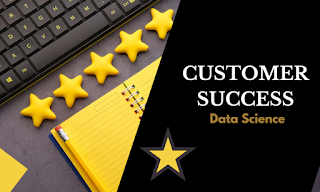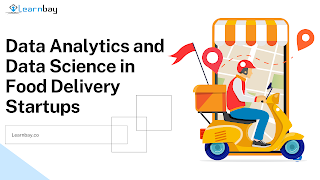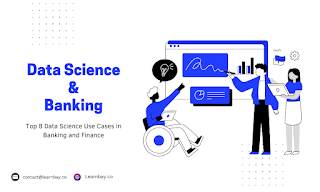How Modern Customer Success Is Powered by Data Science
Every day, customer success teams interact with tens of thousands of customers. Every engagement and interaction is different, and the team gains knowledge from each. Thus, to improve the customer journey, individually addressing many different contacts might be challenging. Being data-driven and using data science is helpful in this case.
Keep reading to learn more about the advantages of a data science strategy and how it impacts customer success.
Why Customer Success Requires a Data Science Strategy
Data is crucial for the success of customers. However, most customer success initiatives or strategies do not make the best use of data science. The following are some main advantages of how a data science approach affects customer success.
Deeper Insights
You will learn more about customer attrition by using data science and data-driven customer success. Additionally, you'll comprehend where clients are having issues, what features of the solution they can't employ, and more.
Customer Health Improvement
Your customer health score will increase with the aid of data science. When data science is utilized, customer loyalty also rises.
Predictive Models of Customer Churn
You can develop churn prediction models. This will make it easier to understand and get ready for the future. Want to know how predictive modeling is done? Refer to the data science and machine learning course in Bangalore, where experts will explain you with detailed concepts.
Increased Retention
Additionally, data science provides prospects for upselling and cross-selling and helps increase retention.
The Ultimate Data Science Strategy for Customer Success
Data-driven SaaS (Software as a Service) companies are performing better than their counterparts. Data science has shown to be useful in streamlining all business operations, improving onboarding, and lowering turnover. You can learn more about customer churn by using a data science strategy. You can also learn who might churn, why customers quit, when to cross-sell and upsell, and other things.
Gather Customer Data
To generate profitable cross-selling possibilities and insights, collect the data you need. How long have your clients been customers of yours? How long they use the product, etc. Additionally, you will be aware of consumer usage statistics, such as how frequently they use the product, its features, and the manner in which complaints are handled.
Centralize the Data
The data must then be centralized and integrated to make it as efficient as feasible. To reduce inaccurate results, you must endeavor to avoid making any erroneous data entries. Getting the appropriate insights may become challenging as the firm expands. Here, machine learning and artificial intelligence can support the delivery of precise results in a timely manner.
Learn from Data
The data science approach must be modified to fit the needs and scale of the firm. Small firms must carefully evaluate data to identify trends that differentiate them from rivals. Providing the appropriate reports may involve processing data using machine learning and artificial intelligence.
Implement and Integrate Your Learnings
Focusing on loyalty and retention is the next step because it will benefit you in the long run. After tactically compiling all client data, you can incorporate the findings to make informed decisions and facilitate increased customer success. In order to increase lead scoring, get knowledgeable, and interact with clients more effectively, you may be more effective and prioritize leads. This will aid in forecasting future purchasing choices and openness for upselling and cross-selling. In order to churn circumstances, you must also effectively grow and adopt a proactive attitude.
Best Practices to Launch Data-Driven Customer Success
Establish Collaboration between Customer Facing Teams and data scientists
Teams working on data science and customer success must effectively collaborate. This will enable data teams to look at solutions to the problems and help CS teams better define their problems. Improvements in both sectors will result from this productive partnership, which will create a win-win situation.
Change to an Agile Strategy
The use of agile approaches can enhance how businesses operate. It will lessen the likelihood that programs will fail, increase the effect, and concentrate resources in the best places.
Predictive Insights Need to be Simplified
Computer science (CS) teams must have a fundamental grasp of technology, and simplicity makes this possible. It must be straightforward for CS teams because they might not be familiar with the technology and tools. Instead of relying solely on speculation, outcomes must be predicted and stimulated by data.
Fill in Data Gaps
You must choose the available data to start with. There could be some data that would be useful. Even if using machine learning techniques may not be simple, one should not wait. To fill gaps, you must move concurrently and collaborate with data teams.
Conclusion
In order to improve customer retention, contentment, service, loyalty, and other factors, data science for customer success is essential. As a result, to maximize the benefits of your customer success plan, you must experiment and identify the best strategy. You possess crucial information, can stop churn, and produce significant discoveries that are beneficial for overall development. Overall, data science can develop, maintain, and expand customer connections. IF you wish to learn more about how data science techniques help businesses including customer satisfaction, visit the popular data science course in Bangalore, and become proficient in modern technologies.




Comments
Post a Comment